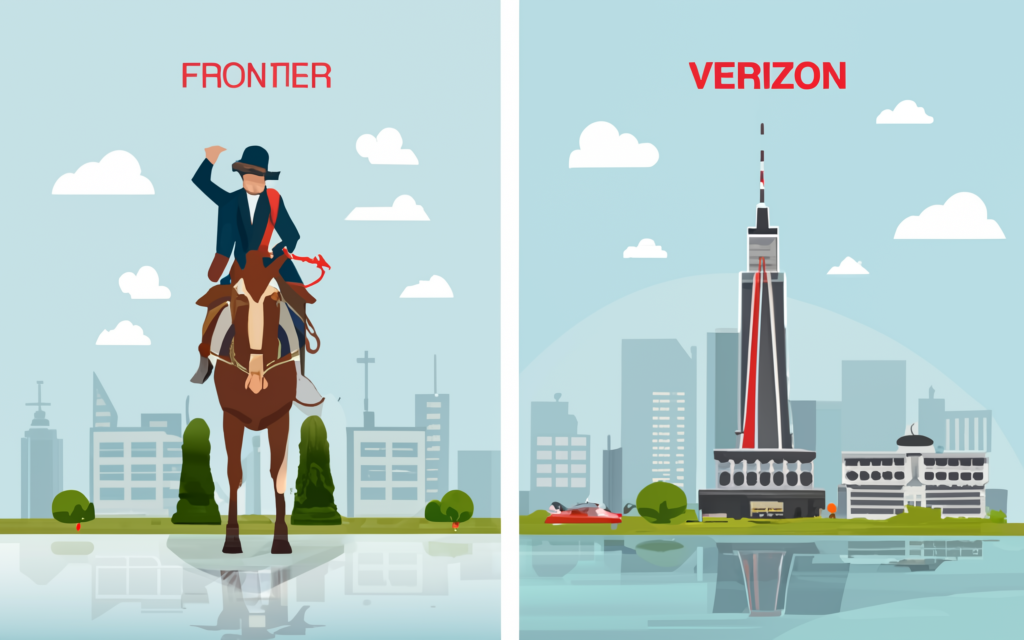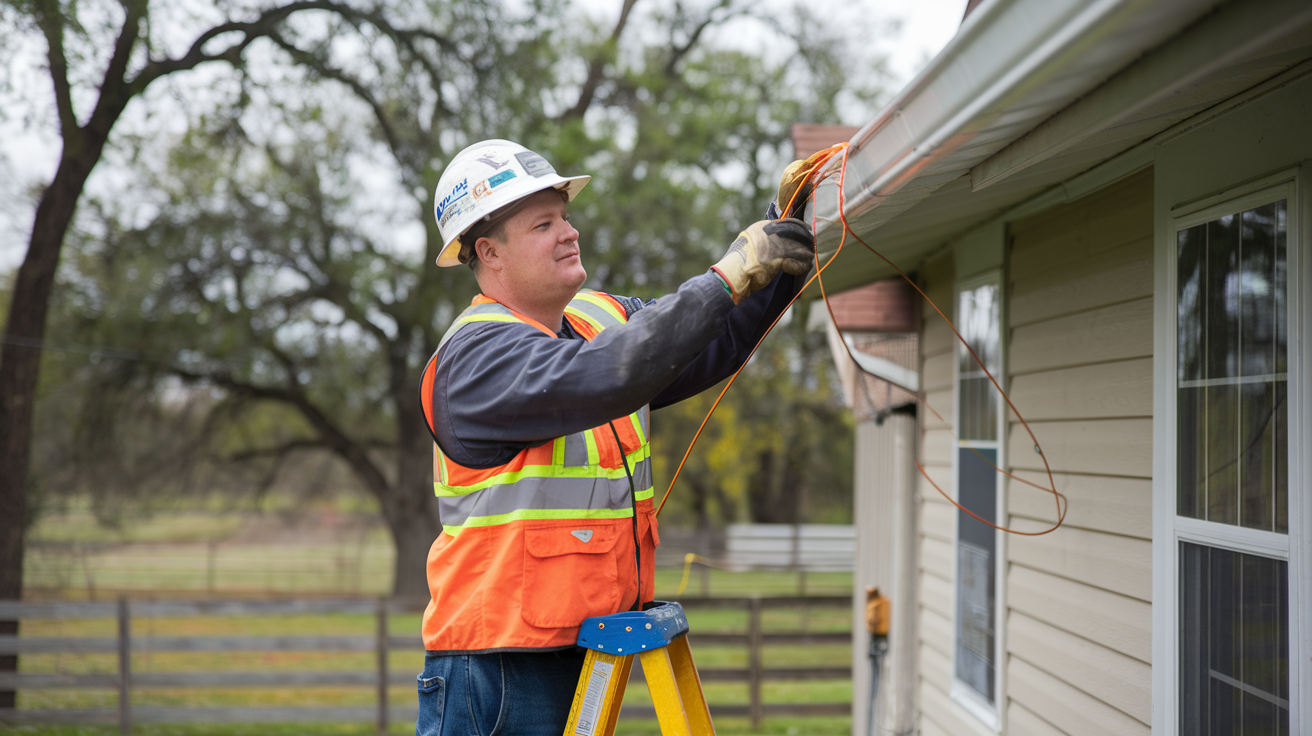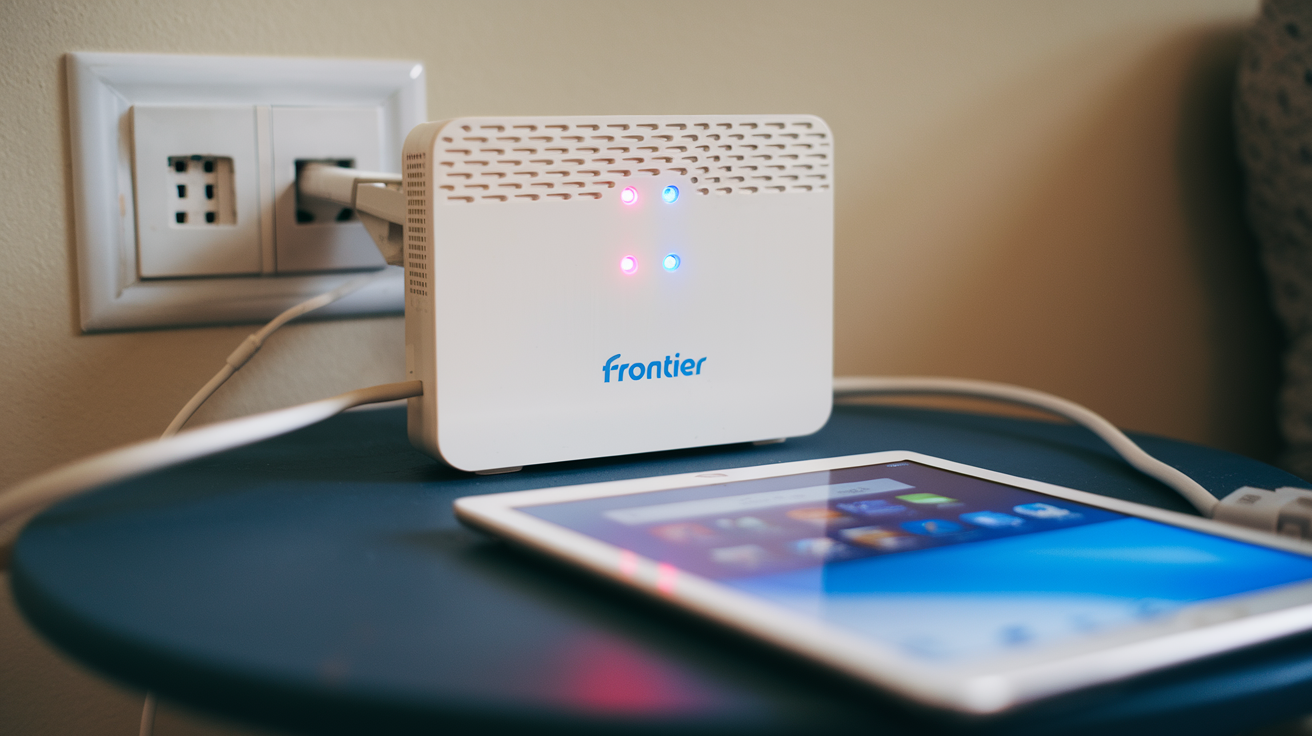
Introduction
In the quest for reliable, high-speed internet, Frontier and Verizon Fios stand out as two prominent providers, particularly for those seeking fiber-optic connectivity. Both offer fast, dependable internet, but their plans, pricing, availability, and customer experiences differ significantly. As of August 5, 2025, Frontier Fiber provides some of the fastest speeds in the industry, while Verizon Fios is renowned for its reliability and customer satisfaction. With Verizon’s $20 billion acquisition of Frontier approved in May 2025 and set to close by early 2026, the landscape may shift, but for now, both operate as separate entities. This 2500-word guide compares Frontier and Verizon Fios across key factors like speed, pricing, availability, reliability, and customer service, helping you decide which is better for your needs. We’ll also address common questions in a detailed FAQ section to guide your decision-making process.
Understanding Frontier and Verizon Fios
Frontier Internet
Frontier Communications offers both fiber-optic and DSL internet across 25 states, with a strong focus on expanding its fiber network. Originally known for DSL in rural areas, Frontier has invested heavily in fiber, reaching 6.8 million fiber passings by 2025. Its fiber plans are highly competitive, offering speeds up to 7,000 Mbps, making it one of the fastest ISPs in the U.S. Frontier’s DSL plans, however, are slower and less reliable, with speeds ranging from 9-115 Mbps.
-
Key Features:
-
Fiber plans with symmetrical upload/download speeds.
-
No data caps or contracts on fiber plans.
-
Free Wi-Fi 7 router (e.g., Eero Pro 7) included.
-
Optional Whole Home Wi-Fi for $10-$30/month.
-
Verizon Fios
Verizon Fios is a 100% fiber-optic internet service, available in nine states (primarily the Northeast) and Washington, D.C. Known for its reliability and high customer satisfaction, Fios offers speeds up to 2,000 Mbps. Verizon also provides 5G Home Internet and LTE Home Internet in some areas, but Fios remains its flagship fiber service. With 7.4 million fiber subscribers, Verizon Fios is a leader in the fiber market.
-
Key Features:
-
Symmetrical speeds (except for the 1 Gig plan).
-
No data caps or contracts.
-
Free Wi-Fi router included.
-
Bundling options with mobile, TV, or streaming services.
-
Detailed Comparison of Frontier and Verizon Fios
1. Speed and Performance
Both providers leverage fiber-optic technology, which offers low latency (5-20 ms) and high reliability compared to DSL or satellite. However, their speed offerings differ significantly:
-
Frontier Fiber:
-
Speeds: 200 Mbps to 7,000 Mbps (symmetrical).
-
Top-tier plans (5-7 Gbps) are ideal for heavy users, supporting 4K streaming, VR gaming, and large households.
-
DSL speeds (9-115 Mbps) are slower and less reliable, suitable only for basic tasks.
-
-
Verizon Fios:
-
Speeds: 300 Mbps to 2,000 Mbps (symmetrical for most plans, except 1 Gig at 940/880 Mbps).
-
Suitable for most households, supporting HD streaming, gaming, and remote work.
-
Limited to 2 Gbps in most areas, with 2,300 Mbps available in select locations (e.g., greater NYC).
-
Winner: Frontier, for its broader range of speed options, including ultra-fast 5-7 Gbps plans.
2. Pricing
Pricing is a critical factor, and Frontier generally offers lower starting prices:
-
Frontier Fiber Plans:
Plan
Monthly Price
Download/Upload Speed
Fiber 200
$30
200/200 Mbps
Fiber 500
$30
500/500 Mbps
Fiber 1 Gig
$50
1,000/1,000 Mbps
Fiber 2 Gig
$70
2,000/2,000 Mbps
Fiber 5 Gig
$90
5,000/5,000 Mbps
Fiber 7 Gig
$110
7,000/7,000 Mbps
-
No equipment fees; free Wi-Fi 7 router included.
-
Prices may increase by $10-$20 after 12 months.
-
Promotional offers include gift cards or discounts.
-
-
Verizon Fios Plans:
Plan
Monthly Price
Download/Upload Speed
Fios 300
$49.99
300/300 Mbps
Fios 1 Gig
$69.99
940/880 Mbps
Fios 2 Gig
$89.99
2,000/2,000 Mbps
-
No equipment fees; free router included.
-
Prices include Auto Pay discounts; may increase after promotional period.
-
Perks like NFL Sunday Ticket or Disney+ bundles are available.
-
Winner: Frontier, for lower starting prices and better value per Mbps (e.g., 6 cents/Mbps for Fiber 500 vs. higher for Verizon).
3. Availability
-
Frontier: Serves 25 states, including California, Texas, Florida, and rural areas. Its fiber network covers 6.8 million locations, with plans to reach 10 million by 2025.
-
Verizon Fios: Limited to nine states (e.g., NY, NJ, PA, VA) and Washington, D.C., covering 7.4 million fiber subscribers. Availability is concentrated in the Northeast.
Winner: Frontier, for broader coverage, especially in rural and suburban areas.
4. Reliability
Both providers use fiber-optic technology, which is inherently reliable due to low latency and resistance to most weather conditions. However:
-
Frontier: Fiber plans are highly reliable, with customers reporting minimal outages. DSL plans are less dependable, affected by distance from the hub.
-
Verizon Fios: Known for consistent performance, with fewer outages than cable or DSL. Ookla tests rank Verizon as the third-fastest fixed ISP in 2025, behind Frontier and AT&T Fiber.
Winner: Tie, as both offer reliable fiber connections, though Frontier’s DSL is a weak point.
5. Customer Service
-
Frontier: Scored 71/100 in the 2025 ACSI, below the industry average of 76. Customer reviews are mixed, with complaints about DSL service but praise for fiber reliability.
-
Verizon Fios: Scored 76/100 in the 2025 ACSI, tying with Google Fiber. It ranks first in the East for J.D. Power’s 2024 customer satisfaction, with 575/1,000 points.
Winner: Verizon Fios, for higher customer satisfaction and consistent rankings.
6. Additional Features
-
Frontier:
-
Free Wi-Fi 7 router (Eero Pro 7 or Max 7).
-
Optional Whole Home Wi-Fi ($10-$30/month).
-
No data caps or contracts.
-
Limited bundling options (e.g., YouTube TV).
-
-
Verizon Fios:
-
Free router with Gateway technology.
-
Bundling with mobile, TV, or streaming (e.g., Disney+, NFL Sunday Ticket).
-
No data caps or contracts.
-
Price lock for up to 5 years on select plans.
-
Winner: Verizon Fios, for more robust bundling options and perks.
7. Impact of Verizon’s Acquisition
Verizon’s acquisition of Frontier, approved in May 2025, is set to close by Q1 2026. This will combine Frontier’s 2.2 million fiber subscribers with Verizon’s 7.4 million, creating a network of 25 million fiber passings across 31 states. Potential impacts include:
-
Plan Changes: Verizon may phase out Frontier’s 5-7 Gbps plans, as its fastest residential plan is 2 Gbps.
-
Pricing: Verizon’s pricing is higher, so Frontier customers may face increases post-acquisition.
-
Service Integration: Frontier’s fiber network will integrate with Verizon’s, potentially improving reliability but reducing plan variety.
Recommendation: Sign up with Frontier now to lock in current pricing before potential changes.
Conclusion
As of August 5, 2025, Frontier Fiber is the better choice for users seeking faster speeds and lower prices, with plans up to 7,000 Mbps starting at $30/month. Its broader coverage across 25 states makes it accessible to more users, especially in rural areas. Verizon Fios, available in nine states, offers reliable service with speeds up to 2,000 Mbps and superior customer satisfaction, making it ideal for those prioritizing support and consistency. Both providers deliver contract-free, unlimited data plans with free routers, but Frontier’s value and speed options give it an edge. With Verizon’s acquisition of Frontier set to close in early 2026, consider signing up with Frontier now to secure current pricing. Check availability at www.frontier.com (1-855-559-8397) or www.verizon.com (1-800-837-4966) to find the best fit for your needs.
FAQs: Frontier vs. Verizon Fios Internet
1. Which is faster, Frontier or Verizon Fios?
Frontier Fiber offers speeds up to 7,000 Mbps, significantly faster than Verizon Fios’ maximum of 2,000 Mbps (2,300 Mbps in select areas). For high-performance needs, Frontier is the better choice.
2. Is Frontier cheaper than Verizon Fios?
Yes, Frontier’s plans start at $30/month for 200-500 Mbps, compared to Verizon’s $49.99/month for 300 Mbps. Frontier’s higher-tier plans also offer better value per Mbps.
3. Where are Frontier and Verizon Fios available?
Frontier serves 25 states, including California, Texas, and Florida, with a focus on rural and suburban areas. Verizon Fios is available in nine states (e.g., NY, NJ, PA) and Washington, D.C., primarily in the Northeast. Check availability at www.frontier.com or www.verizon.com.
4. Which has better customer service?
Verizon Fios ranks higher, scoring 76/100 in the 2025 ACSI and first in the East for J.D. Power’s 2024 survey. Frontier scores 71/100, with mixed reviews, particularly for DSL.
5. Do Frontier or Verizon Fios have data caps?
Neither imposes data caps on fiber plans, allowing unlimited streaming, gaming, and downloading.
6. Are there contracts with Frontier or Verizon Fios?
Both offer contract-free fiber plans, though some promotional offers (e.g., gift cards) may require a term agreement.
7. How will Verizon’s acquisition of Frontier affect customers?
The acquisition, set to close in Q1 2026, may lead to higher prices or the phasing out of Frontier’s 5-7 Gbps plans. Current Frontier customers should lock in pricing now to avoid potential changes.
8. Which is better for gaming or streaming?
Frontier’s higher speeds (up to 7 Gbps) are ideal for 4K streaming and VR gaming, but Verizon’s lower latency and reliability make it competitive for online gaming.






